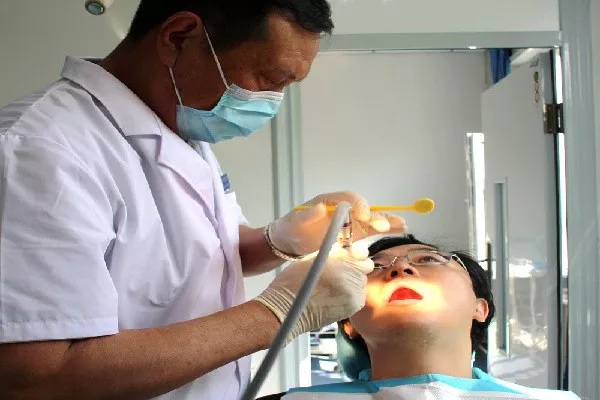Wisdom tooth removal is a common dental procedure that many people undergo at some point in their lives. While the thought of having a tooth extracted can be daunting, understanding the pain associated with wisdom tooth removal can help alleviate anxiety and prepare patients for what to expect. In this comprehensive guide, we delve into the topic of wisdom tooth removal pain, exploring its severity, duration, and ways to manage discomfort effectively.
An Overview of Wisdom Tooth Removal
Before delving into the specifics of post-operative pain, it’s essential to understand the procedure itself. Wisdom teeth, also known as third molars, typically emerge in late adolescence or early adulthood. However, due to limited space in the jaw, these teeth often become impacted, causing pain, swelling, and potential damage to surrounding teeth.
The extraction of impacted wisdom teeth is a routine surgical procedure performed by oral surgeons or dentists. It involves numbing the area with local anesthesia or administering general anesthesia for more complex cases. The surgeon then removes the tooth by making an incision in the gum tissue and extracting the tooth from the jawbone.
Types of Pain Associated with Wisdom Tooth Removal
Immediate Post-Operative Pain: Following the extraction procedure, patients may experience immediate discomfort as the effects of anesthesia wear off. This pain is typically manageable and may feel similar to soreness or tenderness at the extraction site.
Swelling and Discomfort: Swelling and discomfort around the extraction site are common in the days following surgery. This discomfort may extend to the jaw, cheeks, and even the neck.
Nerve Pain: In some cases, patients may experience nerve pain, particularly if the extraction involves wisdom teeth located close to nerve bundles. This pain can manifest as tingling, numbness, or shooting sensations in the jaw, lips, or tongue.
Dry Socket Pain: Dry socket occurs when the blood clot that forms in the extraction site becomes dislodged or dissolves prematurely, exposing the underlying bone and nerves. This condition can cause intense, throbbing pain that radiates from the extraction site to the ear and jaw.
Severity and Duration of Pain
The severity and duration of pain associated with wisdom tooth removal can vary depending on several factors, including:
The complexity of the extraction: Surgical extractions involving impacted wisdom teeth may result in more significant post-operative pain compared to straightforward extractions.
Individual pain tolerance: Pain perception varies among individuals, with some experiencing minimal discomfort while others may find the pain more intense.
Adherence to post-operative care instructions: Proper post-operative care, including rest, ice packs, and prescribed pain medication, can help manage pain and promote healing. Failure to follow these instructions may prolong discomfort.
In general, most patients experience the peak of pain and swelling within the first 24 to 72 hours following surgery. However, discomfort typically begins to subside gradually thereafter, with significant improvement observed within the first week post-surgery. Complete healing of the extraction site may take several weeks.
Managing Wisdom Tooth Removal Pain
Prescribed Pain Medication: Oral surgeons often prescribe pain medication, such as ibuprofen or acetaminophen, to alleviate post-operative discomfort. These medications help reduce inflammation and provide relief from pain. It’s crucial to follow the prescribed dosage instructions and avoid exceeding recommended limits to minimize the risk of side effects.
Ice Packs: Applying ice packs to the cheeks outside the mouth can help reduce swelling and numb the extraction site, providing temporary relief from pain. Ice packs should be applied intermittently for 20 minutes at a time during the first 24 to 48 hours post-surgery.
Soft Diet: Consuming a soft diet consisting of mashed potatoes, yogurt, soups, and smoothies can minimize discomfort during the initial healing period. Avoiding hard, crunchy, or spicy foods can prevent irritation and promote healing.
Saltwater Rinse: Rinsing the mouth with warm saltwater several times a day can help cleanse the extraction site, reduce bacteria, and promote healing. Mix a teaspoon of salt in a glass of warm water and gently swish the solution around the mouth, taking care not to disturb the blood clot.
Avoiding Smoking and Alcohol: Smoking and alcohol consumption can impede the healing process and increase the risk of complications such as dry socket. It’s essential to refrain from smoking and alcohol consumption for at least the first few days following surgery.
Conclusion
Wisdom tooth removal pain is a common concern for individuals undergoing this dental procedure. While discomfort is inevitable, understanding the types, severity, and duration of pain associated with wisdom tooth removal can help patients prepare mentally and emotionally for the post-operative period. By following post-operative care instructions, including prescribed pain medication, ice packs, and a soft diet, patients can effectively manage pain and promote optimal healing. It’s essential to communicate any concerns or persistent pain to your oral surgeon or dentist to ensure proper management and timely resolution of any complications. With proper care and attention, most patients can expect to recover comfortably and resume normal activities within a relatively short period following wisdom tooth extraction.
How Can I Clean My Mouth After Wisdom Teeth Removal
How To Care After Wisdom Tooth Extraction
How Long Does Wisdom Teeth Removal Pain Last






























